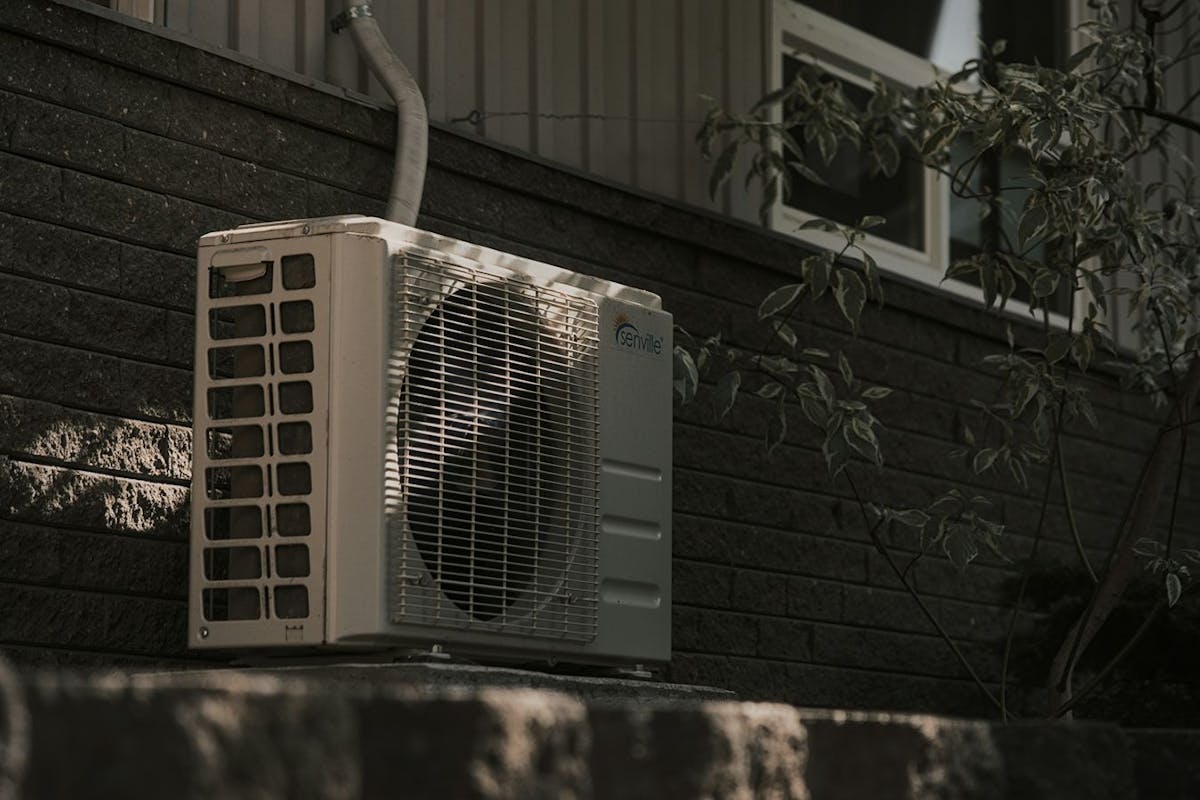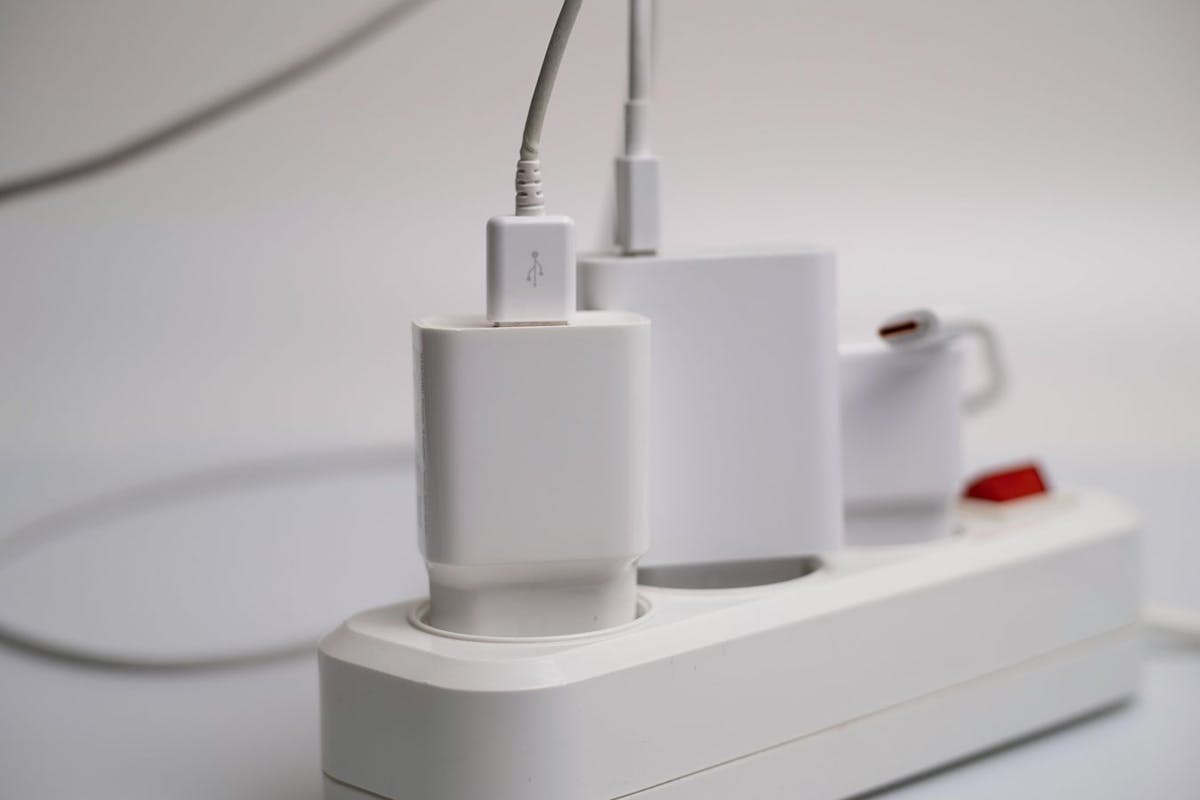How Much Can You Save With Energy-Efficient Appliances?
Last edited

Author
Andrew Blok
Electrification and Solar Writer and Editor

Editor
Andrew Giermak
Solar and Electrification Writer and Editor

If your energy bills are going up, you can look for ways to cut back your energy use at home. That can mean actively managing it by shutting off lights, adjusting your thermostat when you leave home for eight hours, or using your ceiling fan to take some of the pressure off your heat pump.
You can also swap out old and failing appliances for new, energy-efficient ones. Then, any time your use them, you save a bit of energy. Here's how you can save with your new purchase.
See how much you can save with home energy changes
What Are Energy Star Appliances?
The quickest way to find an energy-efficient appliance is to find the Energy Star logo: the sky blue square with a white star is on the most efficient choices wherever you shop for appliances. Energy Star is a program run by the US Environmental Protection Agency.
To be Energy Star-certified, companies need to prove their product meets certain efficiency standards for their category. Those standards vary by the type of product (it doesn’t make sense to judge a heat pump and a clothes dryer by the same metrics) and are updated over time.
How Much Money Do Energy Star Appliances Save?
EPA says since the program’s start in 1992, Energy Star has avoided 5 trillion kilowatt hours of energy consumption, good for $500 billion in avoided energy costs.
While the amount you can save will vary by the model and appliance you’re buying, the model you’re replacing, and your usage habits, you’ll likely spend less on energy. That’s true even if you’re replacing an old Energy Star appliance with a new one, since standards improve over time.
The EnergyGuide label shows you estimates of how much it’ll cost to run an appliance. EnergyGuide labels are on boilers, ceiling fans, central air conditioners, clothes washers, dishwashers, freezers, heat pumps, refrigerators, televisions, water heaters, and more. That bright yellow label tells you how much energy the appliance is likely to use in a year and what that will cost. Your actual cost will depend on your local rate and how much you use the appliance compared to the average.

Air conditioners
Energy Star-rated central air conditioners meet specifications that make them at least 8% more efficient than new conventional models. See Energy Star-rated air conditioners.
Ceiling fans
Ceiling fans need to move a specific amount of air for every watt of energy they consume (the amount varies by fan size). They are 60% more efficient than conventional fans and must have warranties of at least three years. See Energy Star-rated ceiling fans. Using a ceiling fan can make a room feel four degrees cooler without adjusting your thermostat.
Clothes washers and dryers
Energy Star-certified washing machines use 20% less energy and 30% less water than their conventional counterparts. Over its lifetime an Energy Star washer can save $550 in avoided energy consumption. If all dryers sold in the US were Energy Star-rated dryers, Americans could see $1.5 billion in energy savings each year. See Energy Star-rated washers and dryers.
Dishwashers
A standard sized dishwasher needs to use less than 240 kWh of electricity per year and less than 3.2 gallons of water per cycle under normal use. That can save you $50 a year and 5,800 gallons of water over the machine's lifetime, the EPA says. See Energy Star-rated dishwashers.
EV chargers
At-home electric vehicle chargers must meet minimum efficiency standards for charging and idling. See Energy Star-rated EV chargers.
Freezers and refrigerators
Standalone and combined refrigerators and freezers use about 10% less energy than the minimum federal standard to get Energy Star certification. See Energy Star-rated fridges and freezers.
Heat pumps
Heat pumps are already the most efficient way to heat and cool your home in most places in the country. Since heating and cooling make up over 50% of home energy use in the US and heat pumps can do both, choosing an efficient model can make a big difference. EPA’s savings calculator estimates what you can save by switching to a heat pump. See Energy Star-rated heat pumps.
Smart thermostats
Smart thermostats that earn Energy Star certification “have been independently certified, based on actual field data, to deliver energy savings.” See Energy Star-rated smart thermostats.
Televisions
Energy Star-rated TVs are typically 25% more efficient than non-rated models and meet efficiency standards when they’re on standby or playing your favorite show. See Energy Star-rated TVs.
Water heaters
Electric water heaters must have a first hour rating (the amount of hot water it can supply in an hour if starting fully hot) of 45 gallons, have at least a six-year warranty, and meet efficiency requirements. See Energy Star-rated heat pump water heaters.
See how much you can save with home energy changes
What to Look for When Buying an Energy-Efficient Appliance
Before you buy, make sure it can meet your needs (e.g. a water heater can deliver enough hot water for your whole family’s needs each morning). You can find people discussing their experience with a surprising range of appliances, brands, and models online. Be sure it fits the number of people living at home (or how many you think might in the future), your habits, and your available space.

Energy Star also publishes the most efficient appliances of the year and a searchable lists of all the products earning Energy Star certification.
Tax Credits for Energy-Efficient Appliances
While some energy-efficient appliances might incur a price premium, a slew of energy efficiency tax incentives and rebates have popped up in recent years.
Newly installed heat pumps can earn you a tax credit worth 30% of the installation costs (up to $2,000) from the IRS. You can also get an additional $1,200 in tax credits yearly for efficient air conditioners, windows, doors, insulation, though annual limits apply to the credit for some of those items. These credits expire at the end of 2025.
Energy Efficient Home Improvement Credit
This federal tax credit can get you 30% of your project cost back to you on your taxes. There's a $1,200 yearly limit and some limits for individual improvements. There's no lifetime limit.
| Item | Per limit item | Annual Limit |
|---|---|---|
| Home energy audit | $120 | $120 |
| Doors | $250 | $500 |
| Windows and skylights | $600 | $600 |
| Insulation | $1,200 | $1,200 |
| Air conditioners | $600 | $1,200 |
Heat pump and biomass stoves and boilers
The separate tax credit for heat pumps (and other heating appliances), can earn you a tax credit of up to 30% of your project cost, up to $2,000 dollars with no lifetime limit.
| Item | Per limit item | Annual Limit |
|---|---|---|
| Heat pumps | $2,000 | $2,000 |
Residential Clean Energy Credit
While not exactly an energy efficient appliance, solar panels can be a valuable part of a home electrification plan. The longstanding federal tax credit for solar panels can return 30% of your installation costs for solar and storage when you file your taxes.
| Item | Per limit item | Annual Limit |
|---|---|---|
| Solar panels and batteries | N/A | N/A |
Rebates for Energy Efficient Appliances
The Inflation Reduction Act, which established the tax credits mentioned above, also set aside $8.8 billion for energy efficiency rebates.
Rebates are limited to households making 150% the area median income, though states can put a lower cap on their programs. The following rebates are allowed by the federal government, though each state can choose what rebates to offer when designing their program.
Several states have started offering rebates. Check with your own to confirm availability and eligibility requirements.
Home electrification rebates for Energy Star-certified appliances
| Item | Rebate amount |
|---|---|
| Electric heat pump clothes dryer | $840 |
| Electric stoves, cooktops, and ovens | $840 |
| Electric heat pump | Up to $8,000 |
| Electrical panel upgrade | Up to $4,000 |
| Heat pump water heater | Up to $1,750 |
| Induction cooktops | $840 |
Home efficiency rebates
| Energy efficiency project | Rebate amount |
|---|---|
| Projects reducing energy consumption by 20% | Up to $4,000 |
| Projects reducing energy consumption by 35% | Up to $8,000 |
Tips for Using Appliances Efficiently
Here’s how to make the most of your energy-efficient appliances.
Get to know your appliance
Some energy-efficient appliances take a bit of getting used to. For example, some people who use heat pump clothes dryers for the first time think their clothes aren’t dry when the cycle is finished, but really they’re just cooler. Running the dryer again for clothes that aren’t actually wet eats into what you gain in efficiency.
Some efficient appliances provide the exact same experience as their older, conventional counterparts, but others require a bit of learning. A smart thermostat is more convenient than a non-programmable one. But if it comes with motion detecting enabled and you don’t put the sensor in your home office, you might spend weeks wondering why the thermostat keeps switching to “away.”
Maintain them
Performing the regular required maintenance on your appliances is a good way to make sure they operate at their most efficient for years to come. Whether that’s replacing the air filters in your HVAC system, cleaning the lint trap on your dryer, or getting your heat pump serviced regularly, it all goes to lowering your energy bills.
Energy-Efficient Appliances and Home Electrification
Home electrification can deliver savings to you and climate benefits to the planet. According to the EPA, homes and commercial buildings account for 31% of US greenhouse gas emissions. Energy efficiency at home can eat away at that.
Home electrification, the process of swapping gas appliances for electric ones, is gaining steam as a response to climate change. Because electricity can be a carbon-free energy source, but natural gas can’t, electrification sets the stage for a zero-emission future.
Pairing electrification with rooftop solar can reduce your emissions immediately and reduce your electricity costs, which could increase as you add more electric appliances to your home.
If those appliances are efficient ones, however, you’re starting from a much better place overall. Because efficient appliances use less electricity, you can meet your needs with a smaller solar array, possibly reducing your upfront solar costs.
If you’re interested in learning more about taking control of your home’s energy, you can use our solar savings calculator or our energy advisor tool.
See what home electrification can do for you:
Frequently Asked Questions
What is Energy Star?
Energy Star is a program run by the Environmental Protection Agency that makes choosing an energy-efficient appliance easy. Since 1992, it’s saved Americans $500 billion, the EPA estimates.
How does an efficient appliance save money?
In short, efficient appliances save money by using less energy. The less electricity you use, the less you buy from your utility.
Disclaimer: This content is for educational purposes only. Palmetto does not provide tax, legal, or accounting advice. Please consult your own tax, legal, and accounting advisors.


